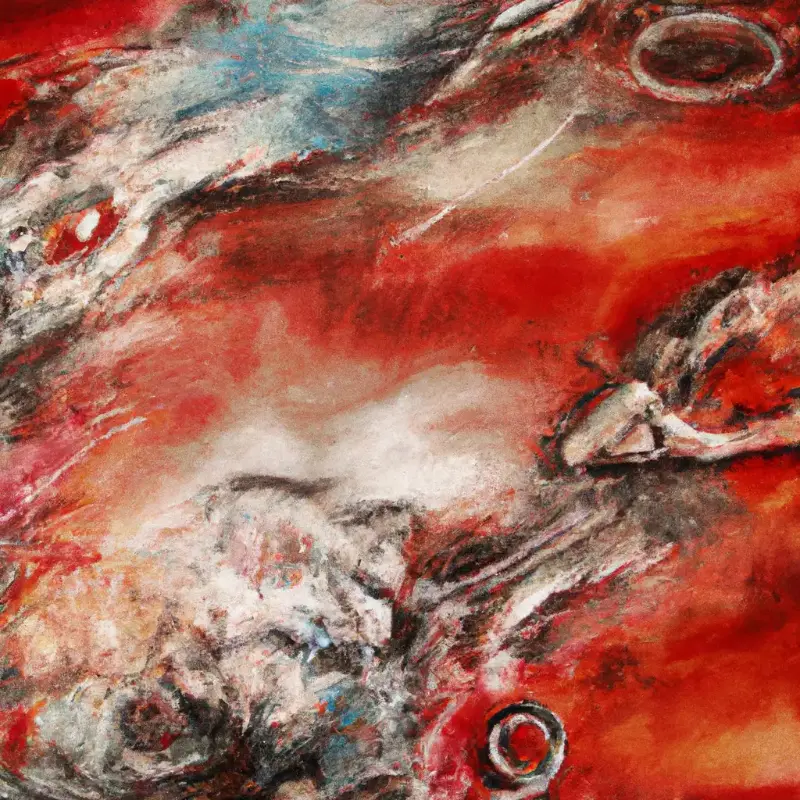Art and Literature as Expressions of the Subjective Self

Discover how art and literature provide unique insights into the subjective self, offering a curious exploration of personal expression and meaning.
🎨📚🖋️🤔👁️🧠🎭🌟🎶
Art and Literature as Expressions of the Subjective Self
- The Abstract Expressionist Movement
- Influence: Emotional intensity and self-expression
- KeyFigure: Jackson Pollock and his action paintings
- Technique: Spontaneous, automatic, or subconscious creation
- Surrealism's Dreamscapes
- Influence: Unconscious mind and dream analysis
- KeyFigure: Salvador Dali and his symbolic compositions
- Technique: Juxtaposition of bizarre and diverse elements
- Romanticism's Introspection
- Influence: Individualism and emotional subjectivity
- KeyFigure: William Wordsworth and his poetry on personal feelings
- Technique: Emphasis on emotion over reason
- Modernist Literature’s Stream of Consciousness
- Influence: Interior monologue and psychological exploration
- KeyFigure: James Joyce and his novel "Ulysses"
- Technique: Nonlinear narrative and disrupted chronology
- Postmodernist Art's Paradoxes
- Influence: Irony, playfulness, and the questioning of reality
- KeyFigure: Cindy Sherman and her conceptual portraits
- Technique: Blending high and low culture, pastiche
- Beat Generation's Spontaneity
- Influence: Non-conformity and spiritual quest
- KeyFigure: Jack Kerouac and his free-flowing prose
- Technique: "First thought, best thought" approach
- Existentialist Thought in Theatre
- Influence: The human condition and personal responsibility
- KeyFigure: Jean-Paul Sartre and his plays questioning existence
- Technique: Minimalist setting and dialogue to focus on ideas
- The Harlem Renaissance's Cultural Expression
- Influence: African American experience and heritage
- KeyFigure: Langston Hughes and his jazz-influenced poetry
- Technique: Fusion of personal narrative with cultural rhythm
- Social Realism's Mirror to Society
- Influence: Socio-economic conditions and class struggles
- KeyFigure: John Steinbeck and his depictions of the Great Depression
- Technique: Portraying everyday life and societal issues
- Magical Realism's Blended Boundaries
- Influence: Reality infused with magical elements to express the ineffable
- KeyFigure: Gabriel García Márquez and his narrative use of magical realism
- Technique: Seamlessly integrating the fantastic into the mundane
Art and Literature as Expressions of the Subjective Self: A Closer Look
The vast realms of art and literature have always been fertile grounds for the exploration of the subjective self. These mediums allow for deep introspection and external expression of the internal psyche. This article delves into how different art and literary movements have captured the intimate aspects of human experience.
Influences of Emotion and the Unconscious
The Abstract Expressionist Movement, as seen through Jackson Pollock's action paintings, emphasized the raw, spontaneous overflow of the artist's emotion onto the canvas. This gesture of painting was a direct conduit for the artist's inner state, making it an authentic representation of self-expression.
Similarly, Surrealism sought to tap into the unconscious. Salvador Dali's dreamscapes acted as a bridge between waking life and the enigmatic world of dreams. His works encouraged viewers to look beyond the rational mind and embrace the surreal aspects of their own psyche.
A Turn Inward
Romantic literature marked a turn away from external world engagement, focusing instead on personal introspection. The poetry of William Wordsworth, replete with emotional reflection, championed the individual's relationship with nature and the inner self.
Modernist literature, especially the stream of consciousness technique pioneered by James Joyce, brought readers directly into the character's internal dialogue. This nonlinear approach to storytelling mirrored the complexities of thought and the multi-layered nature of self-awareness.
Irony and the Questioning of Reality
Postmodern art introduced a playful, ironic take on self-expression. Artists like Cindy Sherman used their art to question identity and reality, revealing the malleable nature of the self.
The Beat Generation, with Jack Kerouac at the forefront, embraced a raw, unrestrained form of writing that sought to capture genuine moments of life and spiritual seeking. Their work often reflected a deep yearning for personal freedom and truth.
Existential Questions and Cultural Voices
In the realm of theatre, existentialist thinkers like Jean-Paul Sartre used the stage to explore deep philosophical questions about existence and identity.
During the Harlem Renaissance, figures such as Langston Hughes infused their work with the rhythms and experiences of African American culture, reinforcing the idea that personal and cultural identity are inextricably linked.
Reflecting Society and Blending Realities
Social Realists like John Steinbeck sought to reflect the harsh realities of society through their work, often advocating for social change and giving voice to the marginalized.
Magical Realism, a hallmark of Gabriel García Márquez's writing, wove together real and fantastical elements, opening a window into the complexities of the human experience and the myriad ways individuals perceive reality.
A Concluding Thought #
Each art and literary movement presents a unique lens through which the subjective self can be examined and expressed. These creative forms not only offer insights into the artists' and authors' minds but also serve as a mirror for our own introspection and understanding of self-awareness.
The beauty of art and literature lies in their capacity to distill the essence of the subjective self and translate it into a form that resonates with the collective experience of humanity.